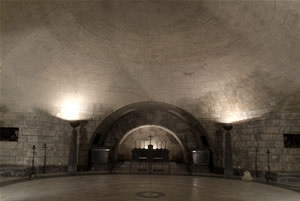(Washington, DC) Over the weekend, I finished Mark Kingwell’s excellent book Nearest Thing to Heaven: The Empire State Building and American Dreams. By coincidence, I spent today in an office three blocks south of the actual Empire State Building. I saw it first from an airport taxi, got a good direct look at it from the window on 31st Street, walked by its front door, and then watched it vanish over Queens on my way to La Guardia.
Seeing it, however, is problematic–that is one of Kingwell’s themes. First of all, it is actually very big. If you are far enough away to see the whole thing, it becomes misleadingly small, unremarkable, dwarfed by routine buildings closer by, sometimes just an extra piece of equipment in the backdrop of a New Jersey auto dealership or a Brooklyn lot. If you come close enough to sense its scale, it veers away so sharply that you can’t really see anything. What you do glimpse is just the skin. It’s a three-dimensional structure; to experience it fully (if such a thing were possible) would require going inside: time and motion would be needed as well as vision.
The Empire State Building is also hard to “see” because you have seen it so many times before, in real life, in postcards and movies, inside snow globes, on tee-shirts, carved as chocolates or soaps. As a result of all that mechanical reproduction, you carry the wrong shape in your mind. In my memory, it had more stone and less steel, more shoulder and less head, than in my experience today.
And it’s a hard object to see because savvy New Yorkers don’t stare up at it, whether they’re walking down the street or in meetings on 31st Street. They are too busy, too blasé. Tourists were standing around the entrance on Fifth Avenue, and since I was also a tourist but didn’t want to seem one, I hurried past.
From the taxi, though, it was OK to stare. The building looked a little solitary, standing down there in the thirties. I recalled Kingwell’s idea that the Chrysler Building is its uptown girlfriend; they seemed a little distant. At first sight, on a grey day, the Empire State Building looked pixilated, like a stack of tiny cubes with angular edges all the way to the Deco dirigible dock at the top. A surprising dark stripe crossed its belly.
I wrote the above on the plane from New York to DC, without really reaching a conclusion before we had to put computers away for landing. We came in low over the Potomac, Georgetown lamps shimmering on the river, the Lincoln Memorial’s skylights glowing upward, and the obelisk standing in the middle of it all. It may have been a trick of the perspective–or something to do with my twenty years of past wrapped up in Washington–but it looked grander than the city we had left.



 My endurance for this kind of thing can be a bit greater than my family’s, so at dusk, I proceeded alone to the
My endurance for this kind of thing can be a bit greater than my family’s, so at dusk, I proceeded alone to the